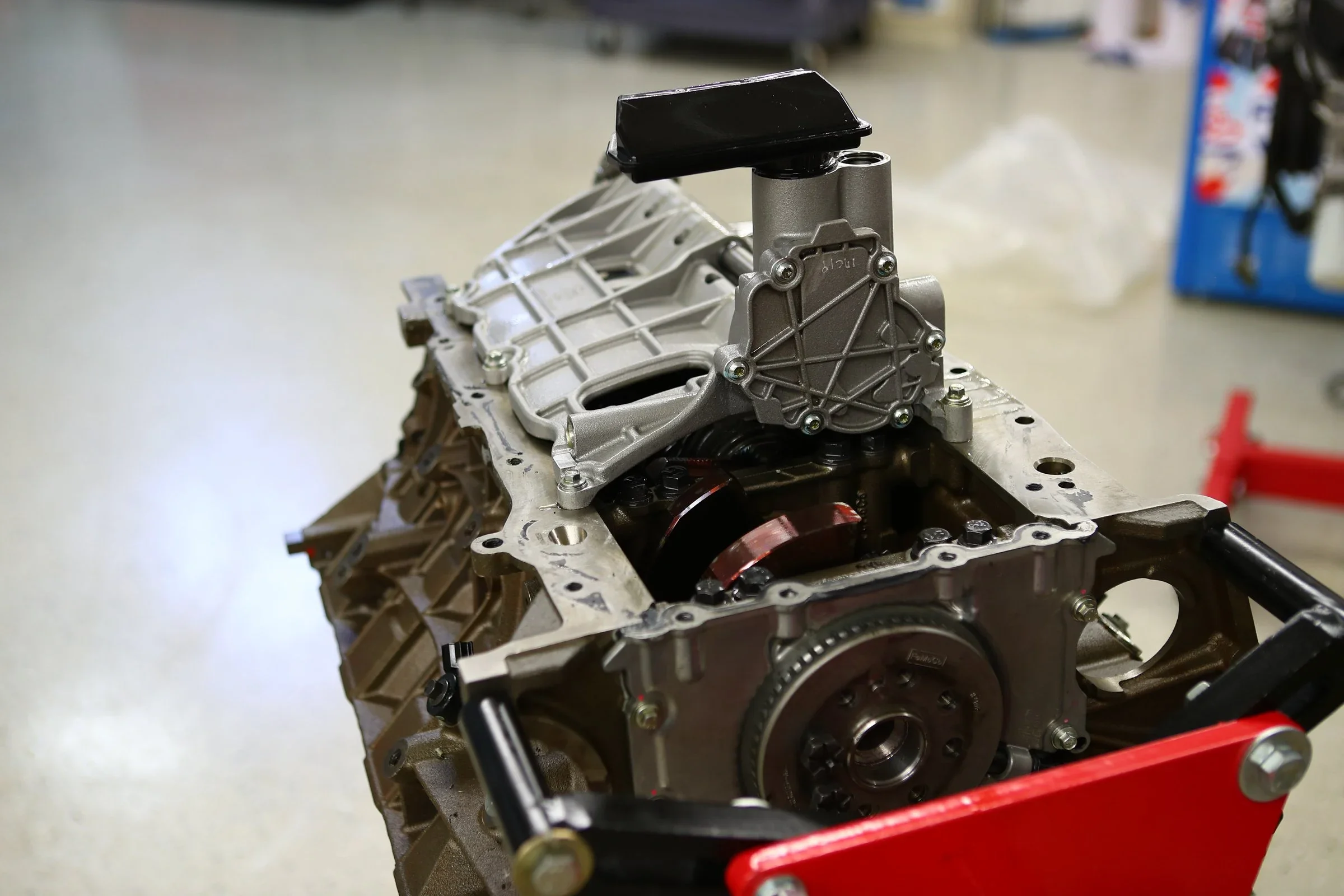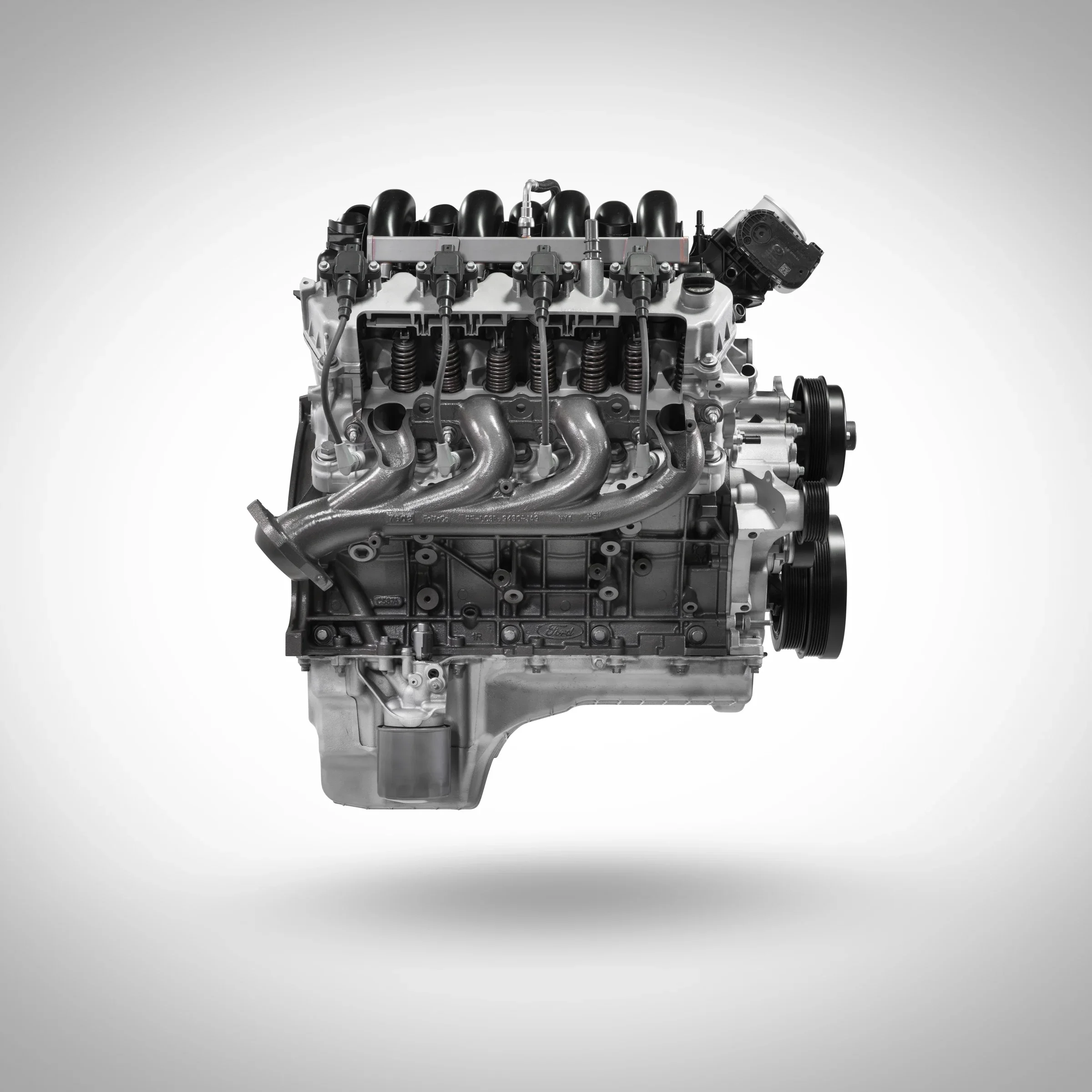engine-pedia: YOUR ULTIMATE GUIDE TO THE FORD 7.3 GODZILLA V8.
Is Ford’s 445-cubic-inch (7.3-litre) big-inch, pushrod truck motor here to stomp the fabled LS platform? The Swap Genie got properly hot under the turban back in 2020 when Ford pulled the sheets back on their then-new F250 Super Duty pick-up truck.
The Blue Oval walked away from traditional cam-in-block V8s in the late 90s, but its latest-generation F250 Medium Duty pick-’em-up has gone back to an overhead-valve pushrod design and big cubes with their Godzilla 7.3 V8.
Named after the fabled King of the Monsters, Ford’s new engine should have horsepower fans excited. While the 5.0-litre Coyotes and Mod Motors are awesome in their own right, the size of overhead-cam cylinder heads and the expense to buy them knocks some of their shine off for engine-swappers.
In stock standard truck-spec (ie: boring, mega-reliable-spec) the Ford 7.3 and spits out 320kW (430hp) at 5500rpm with a stump-pulling 644Nm (475 lb-ft) of torque at 4000rpm as found in F250 trucks (and slightly less in E-series vans).
The Godzilla is a 90-degree Vee and is close size-wise to a traditional small-block Ford at 730mm long (timing cover to rear of block), 585mm wide (across valve covers) and 635mm high. This means it is approximately 5cm wider across the rocker covers than a 351 Windsor, and approximately 3cm longer. It weighs in at a hefty 263kg (580lb), thanks in part to the iron block, the upside of that being enhanced durability and longer life expectancy.
With a 107.2mm bore and 101mm stroke, the Godzilla spans 7.3 litres, or 445ci in the old money, yet Ford considers the engine a small-block due to the 245mm (9.65in) deck height and tight 11.53mm bore spacing. The iron block is skirted for increased strength and features extra external webbing for improved rigidity.
With six-bolt mains and a forged steel crank, the Godzilla looks to be a stout package, especially as Ford claims that much of the design of the 10.5:1-comp cast aluminium slugs carries over from the twin-turbo EcoBoost performance motors. Additionally, piston-cooling oil squirters help cool the back side of the slug and prevent detonation under heavy load, and this is all controlled by the variable-displacement integrated oil pump.
Chain-driven off a crank-mounted sprocket ahead of the timing chain, that variable-pressure oil pump could provide issues when it comes to fitting the engine into cars with lower ride heights, as it affects clearance around the factory 7.5-litre aluminium sump. Similarly, the Godzilla comes equipped with an integrated oil cooler on the oil pan, sitting on the left-hand side.
Aussie Godzilla swappers have used Team 417 oil pans to make the big-inch small-block fit into Down Under Falcons, while Crowbar Customs and Holley also offer oil pans to suit the new Ford platform, however most swappers have chosen to move to an externally-mounted oil pump (like on a dry sump).
Michigan-based Team Z Motorsports fitted a 7.3 Godzilla into a Fox-body Mustang back in January 2020, and it apparently dropped in place with a Mustang 10-speed auto once the factory oil cooler was removed.
As the OE variable cam timing has up to 50 degrees of movement in the cam, punters wanting high-lift-and-duration cam swaps will need to fly-cut the OE pistons for clearance to the intake valve if you want to run SBE-spec.
The variable-pressure oil pump and factory variable cam timing mean that ECU choice will be key. Haltech and Holley are said to be developing loom kits to plug into existing ECU and VCU platforms, while several fast Godzilla-swapped street cars designed to run in drag ‘n’ drive competitions in Australia already run FuelTech ECUs.
While General Motors has moved its Gen V LT pushrod engines to direct-injection, the Godzilla uses more traditional port fuel injection and also features an 80mm drive-by-wire throttle body on the composite intake manifold. The intake sits above a dry valley and mounts on a flat surface to improve sealing to the aluminium cylinder heads, which include steeply angled intake ports and progressive-rate beehive valve springs, with 55mm intake valves and 42mm exhaust valves.
The Godzilla runs a 1-5-4-8-6-3-2-7 firing order. There is no keyway on the crank for the balancer, and the bellhousing bolt pattern is a carry-over from the 4.6/5.4L Mod motors and 5.0L Coyote.
The cylinder heads flow a healthy 320cfm on the intake side and feature super-high intake ports for improved flow. Their flat flanges avoid bore distortion, as do the deep-threading 1/2in cylinder head bolts, while four-layer steel gaskets provide excellent sealing.
Aspirated Godzilla combos with a mild cam have made up to 600hp on an engine dyno, while a spicier aspirated combo went 790hp. Running on C16, that engine featured Wiseco 12.5:1 pistons and MGP aluminium rods, a Charlie Westcott mechanical-roller cam, billet intake, Jesel keyed lifters, Trend pushrods, 90mm drive-by-wire throttle body off a GT350 Mustang, upgraded rockers and titanium valves. And that’s before they fitted the Whipple 3L blower!
Ford claims the wedge-shaped combustion chamber and centralised sparkplug location allow a higher compression ratio for improved efficiency and performance, while the heads boast a shallow valve angle to keep valves away from the cylinder wall, which improves flow. Godzilla wears forged aluminium rockers using nitrided roller bearings, which work with the hydraulic-roller lifters and single-phase variable valve timing, while the cam uses nine 60mm bearing journals to reduce deflection.
Ford Performance Parts recently announced its plan to release a control pack for the Godzilla, which will simplify the process of swapping the motor into an older car. In much the same vein as Chevrolet Performance’s highly successful Connect & Cruise packs, the kit is slated to come with an ECU, wiring harness, drive-by-wire throttle pedal and airbox assembly.
The first iteration of these control packs will cater to auto transmissions, with a manual variant to follow. The hot-up arm of the Blue Oval is also developing front drive-assembly options for Godzilla swaps, along with bare blocks and head castings, crankshafts and individual componentry.
So far Whipple and ProCharger have both released blower options for the new 7.3-litre. The Whipple Stage 2 Gen 5 is a water-to-air-intercooled, 3.0-litre top-mount unit, and is claimed to inflate a Godzilla from the 430hp touted in the user manual to 700hp at the flywheel and over 1000Nm. Meanwhile, ProCharger’s P-1SC-1 side-mounted to a similarly stock Godzilla made “over 600hp” on a claimed 6-8psi.
Harrop Engineering has also released a TVS2650 unit based around Eaton’s advanced four-lobe rotor pack, and in ported housing form on combos with aftermarket cam, pistons and rods, these have pushed well over 1300hp at the engine and run into the 7-second bracket in full-weight street cars.
With the similarities of the pistons to EcoBoost slugs and the big end of the Godzilla rods the same size as a Coyote rod, Wiseco has pistons and Callies has forged pistons and rods already on the shelf to handle 1400-1500hp. Engine designer Brian Wolfe feels the Godzilla’s capacity limit is around 470-480ci due to the compact design of the pistons not leaving a lot of room to move the pin up. Similarly, he pointed to the powdered metal rods (with Torx-bit fasteners) as another area where serious builders want more strength. With injector bosses cast into the cylinder head, punters wanting to carby-swap the Godzilla will have issues. Interestingly, the front drive accessory idlers (and water pump housing) are all part of the one-piece aluminium timing cover, while one of the radiator hoses faces downwards off the left side of the water pump
Brand new Godzillas sell for around US$8500 through Ford Performance Parts in the USA, coming with an 80mm drive-by-wire throttlebody, plastic intake manifold, exhaust manifolds, ignition coils, 7.5L aluminium sump and a factory flexplate. However, there is a plethora of engines popping up with almost zero-miles as a huge number of companies get their trucks and vans EV-swapped – we’ve seen delivery-mileage Godzilla packages with all accessories and ECU for as little as $5000USD.
One thing to note with Godzillas is Ford has suffered quality control problems with the factory roller lifters and camshafts, leading to a decent number of warranty claims. The good news is GM LS lifters appear to go straight into these engines, with many who cam their Godzilla now running LS7 lifters and buckets.







